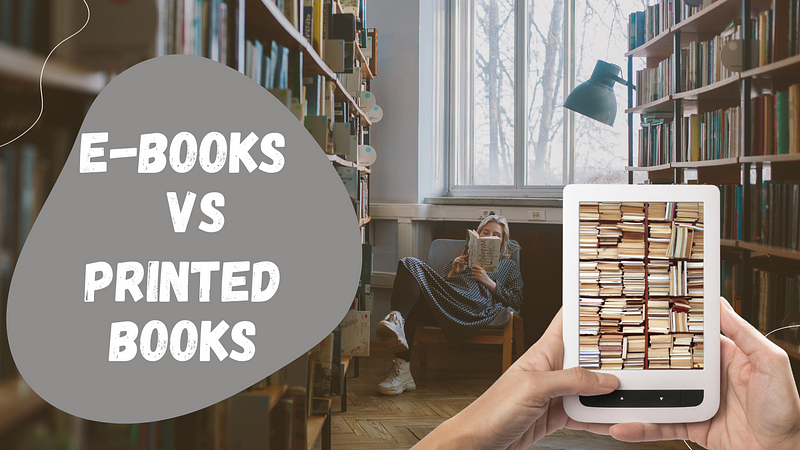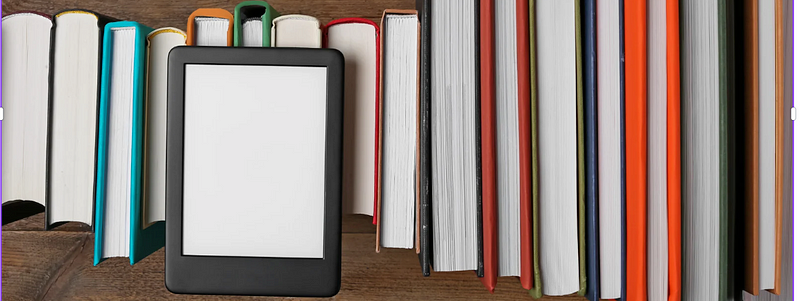E-books vs Printed Books: A Comprehensive Analysis
Written on
Chapter 1: The Digital Reading Landscape
In today's world, a significant number of individuals turn to digital platforms for information and education. This raises the question: are digital formats more advantageous or detrimental compared to traditional print? Let's explore this subject in depth.
As someone who doesn’t frequently engage with electronic books, I usually opt for digital versions only when the physical copy is unavailable or excessively priced. For instance, as an amateur clarinetist, I recently acquired an e-book on music theory. I enjoyed the experience on my iPad, as it allowed me to take digital notes, highlight important sections, and easily edit any errors.
While taking notes in a physical book is possible, I wanted to leverage my iPad’s capabilities, especially since it was my first experience with the device. After acquiring another digital book, I noticed a shift in my reading habits, particularly since I dedicate an hour each evening to reading printed literature before sleep. This prompted me to investigate further, revealing numerous misconceptions I had.
Section 1.1: Comprehension Challenges
Research indicates that reading on screens can hinder comprehension compared to reading printed materials. Surprisingly, many study participants were unaware of this discrepancy. A 2018 study involving over 171,000 individuals from Spain and Israel analyzed 54 studies comparing digital and print readership. Participants believed they were benefiting more from digital texts, yet the findings suggested otherwise.
Subsection 1.1.1: Understanding Digital Content

Upon learning about this research, I questioned how reading the same text in different formats could yield different outcomes. Neuroscientist Maryanne Wolf from the University of California explains that our brains process screen text differently than printed text. For example, while we learn to speak through environmental sounds, reading necessitates additional cognitive effort.
Wolf highlights that our brains lack a specialized network solely for reading; instead, we utilize facial recognition pathways to identify letters. Consequently, when reading on a screen, our brains focus on deciphering the format rather than the content, leading to a decline in comprehension.
Moreover, many individuals tend to read digital content faster than printed material. This habit, developed through rapid phone interactions, fosters a tendency to speed-read, which inadvertently results in a superficial grasp of the material.
Section 1.2: The Importance of Contextual Awareness

Initially, I believed that simply using a digital reading device would resolve these comprehension issues. However, I soon discovered that when engaging with printed books, our brains create a mental map of the content. For example, if a poignant section about a dog’s death is located in the top left corner of the last page read, our brains can readily recall it later.
This mapping process is absent in digital reading, where we scroll rather than flip pages. Even with apps that simulate page-turning, our brains struggle to remember where we left off amid scrolling texts.
Chapter 2: Distractions and Digital Reading
The first video titled "Ebooks VS Printed Books: Which Is Preferred?" explores the ongoing debate surrounding reading preferences. It examines user experiences and preferences in detail.
The second video, "BookWars: E-books vs. Printed Books - Infographic Video," provides a visual representation of the key differences and statistics in the e-book versus print book argument.
Section 2.1: The Role of Distractions

Dr. Jenae Cohn from California State University, Sacramento, emphasizes that distractions are not solely due to the words on the screen. Notifications and other interruptions significantly disrupt the reading process. Personally, when I attempt to read on my iPad, I often forget to enable the do-not-disturb mode and become sidetracked by notifications, even if I don’t engage with them.
Additionally, blue light emitted by screens can cause eye strain and interfere with melatonin production, which affects sleep quality. Some e-readers are designed specifically for reading, allowing users to adjust brightness to minimize discomfort.
Section 2.2: Advantages of Digital Reading

Despite my concerns, I discovered that digital reading offers unique advantages. For instance, individuals with mobility issues can carry an entire library on a single device, providing them access to vast resources. Digital platforms also allow for keyword filtering, enabling quick access to specific information.
Moreover, e-books can include hyperlinks to additional resources, enhancing the reading experience. Price is another factor; many digital publications are significantly cheaper than their printed counterparts, making access more feasible.
Section 2.3: Accessibility Considerations

Specialized fonts and background colors can make reading easier for individuals with dyslexia, while those with visual impairments can listen to books on digital devices, adjusting speed and reader preferences.
Conclusion: The Future of Reading Formats
In summary, digital publications will undoubtedly remain relevant as technology evolves, while the future of printed materials appears uncertain. Researcher Naomi Baron suggests that slowing down and minimizing distractions can enhance our comprehension of digital content.
Today, we examined the pros and cons of digital versus printed publications. I hope this information proves valuable.
Thank you for reading!